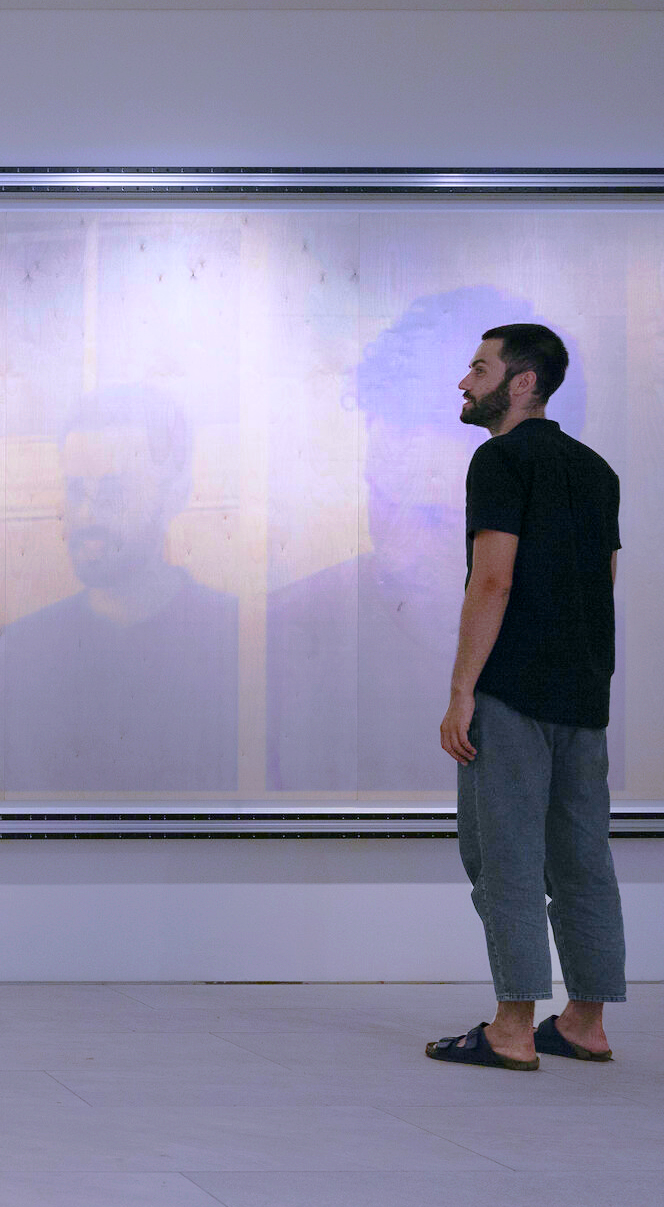
Random International
Presence and Erasure
Presence and Erasure is a portrait machine that explores the reality of automated facial recognition and how people relate to their self-image, instinctively and emotionally. Within a given spatial domain, the artwork constantly scans for faces in the vicinity and photographs them. When the artwork’s algorithm detects a certain quality within a photograph, this image is temporarily printed at large scale by exposing a photochromic surface to light impulses. Each automated portrait remains for little more than a minute, before gradually dissolving into blankness. RANDOM INTERNATIONAL began to combine transient mark-making with automated portraiture early on in their practice, in 2008. Presence and Erasure marks the latest development in this body of work and assumes a minimal, industrial aesthetic that references their earliest studies on this theme. The physical impact of facial recognition and machine vision is emphasised by the exposure of the printing process itself, contrasted against the aesthetic of the high resolution portraits generated. RANDOM INTERNATIONAL intend this as a counter to the perception of surveillance footage as always being low quality, aiming to create a deeper reflection on the nature of surveillance today as well as the resounding cognitive and emotional dissonances.
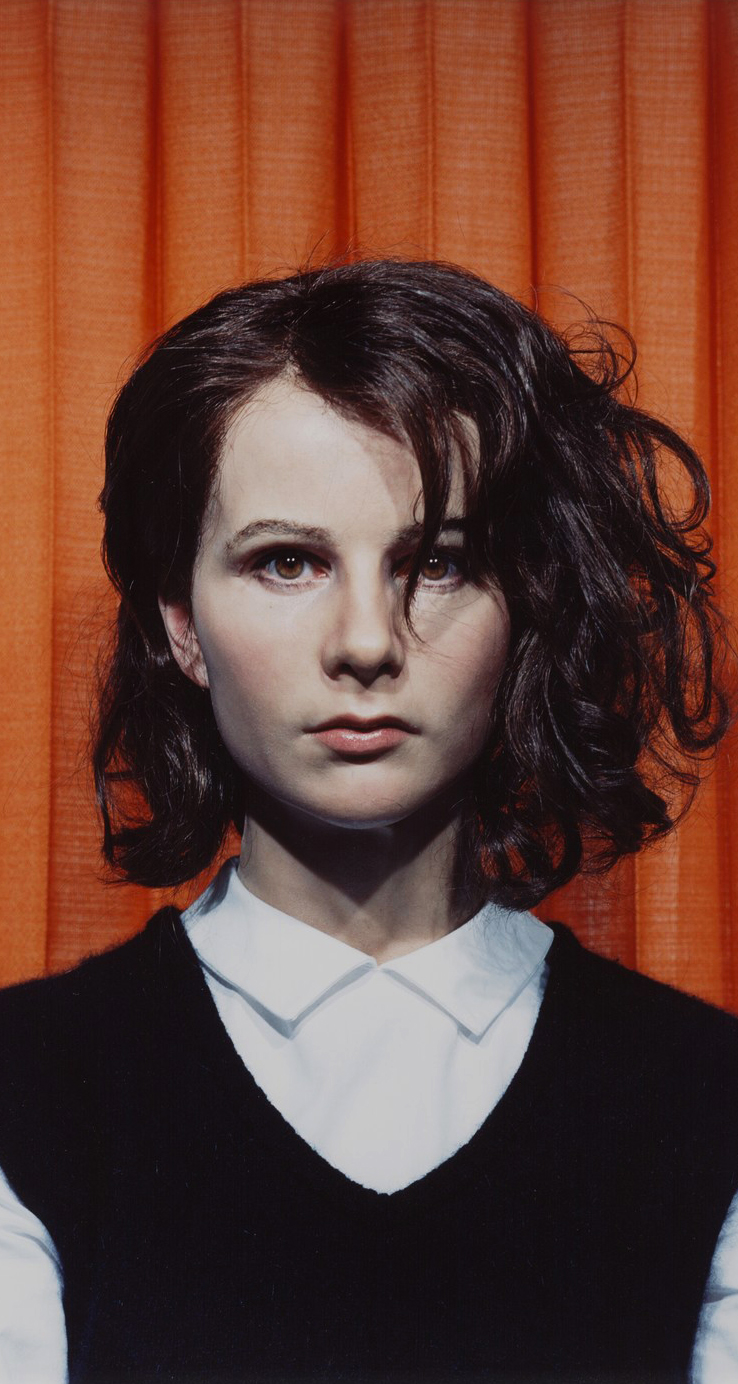

PETRA CORTRIGHT
HELL_TREE
Petra Cortright est une artiste Internet qui réalise des vidéos, des animations gif et des images fixes. Sa page d’accueil ressemble à une page html datée avec un tas de smileys et une liste de son travail: travail authentique, expérimental et nostalgique avec beaucoup de paillettes, d’étincelles, de collages et de personnages faisant des images. Tout au long du site Web, il y a des animations de souris amusantes, par exemple des étincelles qui suivent votre pointeur lorsque vous vous déplacez sur l’écran. Une autre chose intéressante est un cadre qui est attaché à votre pointeur afin que vous puissiez placer le cadre sur un portrait. Cortright a étudié à la Parsons School of Design de New York et au California College of the Arts de San Francisco. Aujourd’hui, elle vit et travaille en Californie. Elle a exposé à l’international dans des galeries telles que Gloria Maria Gallery (Milan) et Spencer Brownston (New York) entre autres. Récemment, Cortright a exposé avec sa série SO WET à la Preteen Gallery de Mexico.

Maria Svarbova
Grössling City Bath
Maria’s photographic work is both non-sentimental and emotionally powerful at the same time. In one of her latest projects, the photographer has produced a range of portraits in the Grössling City Bath. The images are characterized by some kind of mirrored symmetry of unspoken tension.

Ziv Schneider
Watertight
Over the past 50 years, the number of people in the average household has fallen drastically. For the first time in Western world history, the one-person household has become a dominant mode of living. In Manhattan, more than half of all homes have one occupant. For Watertight, we documented 12 New Yorkers and their home interiors with a 3D scanner. We used the Skanect software’s “watertight” function and a 3D printer to create a series of miniature portraits—egg-shaped sculptures the size of a hand. The series of portraits offers a cross-section of a contemporary demographic phenomenon, a form of present-day archaeology.

Pierre-Jean GILOUX
Metabolism _ Invisible Cities
Pierre-Jean Giloux’s first monograph, the publication extends the eponymous video tetralogy inspired by the Japanese utopian architectural movement: Metabolism (1960-70).
The films of the Invisible Cities cycle are portraits of Japanese cities, superimposing filmed and photographed images of everyday, social and urban reality, with virtual images.
The book explores the links in Pierre Jean Giloux’s work that connect four Japanese cities with a rich architectural past (Tokyo, Yokohama, Osaka, Kyoto). This jorney through Japan’s Megapolis traces the history of Japan and ends with the reconstruction of pavilions for the Osaka 70 Universal Exhibition and a virtual proposal for a smart city on the waters of Lake Biwa.
The metabolist utopia to which reference is constantly made in the work of Pierre Jean Giloux played a decisive role in the constitution of post-war Japanese cultural identity and had a notable influence on many contemporary architects.

Karen Lancel & Hermen Maat
Master Touch
In ‘Master Touch’ you make your face visible on a big screen by touching your face. By caressing your own face you ‘paint’ your face on a large electronic screen. On the screen your face appears and merges slowly with portraits of the Rijksmuseum collection.
Merge your face with master pieces from the Rijksmuseum collection, for example a portrait of Rembrandt or van Gogh. Together with the Old Masters you compose a new portrait here and now. In an a sensitive, playful and innovative way you open up the collection and make it personal.

iris van herpen
sensory seas
runway LOOK 08
“The first threads of inspiration came from the Spanish neuroanatomist Ramón y Cajal. He wanted to uncover something that no one had yet understood.
Sensory seas’ holds a microscope over the indelible nuances between the anthropology of a marine organism, to the role of dendrites and synapses delivering infinite signals throughout our bodies. It enchants the attention of how two processes of torrential messaging exist in an uninterrupted state of flux. The collection consists 21 silhouettes that illustrate a portrait of liquid labyrinths, where dresses spill onto the floor in elegant train and pigments gather in cloudedpools of blues and lilac, leaking into one another like marble.” Joanna Klein

PHILIP GLASS
Satyagraha
Portrait Trilogy:Einstein; Akhnaten; Gandhi
composed by Philip Glass, with a libretto by Glass and Constance DeJong.
Loosely based on the life of Mahatma Gandhi, it forms the second part of Glass’s “Portrait Trilogy” of operas about men who changed the world, which includes Einstein on the Beach and Akhnaten.
Glass’s style can broadly be described as minimalist.
Opera in Sanskrit

ELIŠKA SKY
Kingdom of Sport
Series Kingdom of Sport connects the reference to the traditional renaissance portraits and modern sport culture. It was inspired by the classic portrait painting and the greek mythology, especially visible in the short film. Each model demonstrates their constructed ‘royal’ character with one type of sport specialisation. Sport equipment is cleverly integrated into the styling, fashion accessories and set design.

ARNE QUINZE
Арне Куинз
Chaos Life
The composition of a Chaos artwork started as a self-portrait; the representation of what’s going on in his head. But soon a shift occurred towards an enduring research on the definition of chaos in society. Often these artworks are filled with a mass of small wooden sticks attached to each other, looking enormously chaotic. “There’s no chaos, only structure” is a tagline in some of his work expressing his inner self and how he describes his thoughts. To him there is no chaos, everything is structured even in the chaos you find structure. There’s no such thing as chaos in Quinze’s world or at least not in the sense of how society defines chaos. Chaos does exist, as a form of structure. Chaos is irretrievably linked with life. In life everything is a matter of rhythm. Something without a rigid structure is part of the organic order in life.
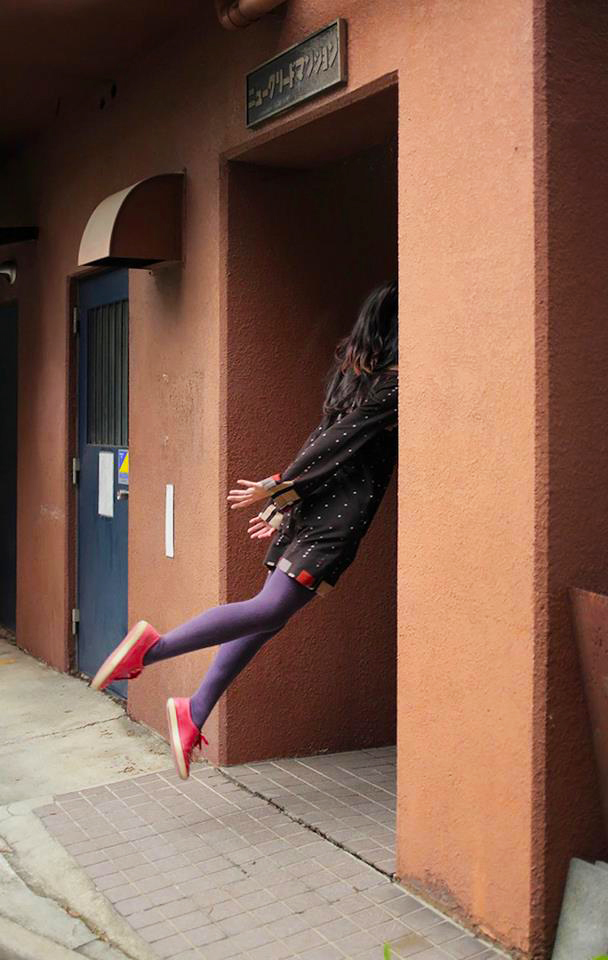
HAYASHI NATSUMI
Today’s Levitation
Tokyo-based photographer Natsumi Hayashi is known as the “levitation girl.” She became an internet sensation over the past year with her “Today’s Levitation” series, a self-portrait project consisting exclusively of images that capture her in mid-air, usually against an everyday urban backdrop.


Lauren Gregory
Triptych
FILE ANIMA+GAMES RIO 2015
Lauren Gregory’s work has been described as primal — drawing from the vocabulary of early human cave paintings, she instinctually always paints with her fingers. Working quickly in oils, she records surprisingly precise images of her live portrait subjects, commemorating the tenderness of their brief human connection.

Julia Noni
With her distinctive point of view as well as a unique sense of color and intriguing details, Julia Noni masterfully manages to integrate her subjects into almost every environment, which brought her international recognition in the different worlds of fashion, advertising, and portrait photography.more…

MANUEL ARCHAIN
square portraits
Manuel Archain was born in Buenos Aires, Argentina, in 1983. He stareted his studies when he was 5, sculpture, drawing and painting at his mother’s studio, the artist Silvina Viaggio. At the age of 13 he adds to his drawing studies a comic background, studying with Carlos Pedrazzini. At the same time he starts his work as a photographer in a practical way, working with different professionals. From here he evolves in his art achieving a personal style. At age of 17 he started to work on commercials, movies and video clips in the art department and as a photographer. Has been assistant photographer of Peter Rad, Blinkk, Samuel Bayer, Tony Kaye and Marc Trautmann. Since 2004 he works as a professional photographer for advertising and cinema.

TIM WALKER
تيم ووكر
蒂姆·沃克
טים ווקר
ティム·ウォーカー
팀 워커
Тим Уокер
Xiao Wen Ju
Tim Walker (født i 1970) er en engelsk modefotograf med base i London. Hans interesse for fotografering begyndte allerede før han ville på universitetet, og arbejdede for Conde Nast Publications i London. Da han senere blev nummer 3 i en fotografikonkurrence i den engelske avis The Independent, valgte han at tage tre år på Photography BA Hons degree på Exter college of art. I 2008 blev hans første egen udstilling holdt på Design Museum i London, hvilket også resulterede i en udgivelse af en bog med hans billeder. Flere museer som Victoria and Albert Museum og National Portrait Gallery i London har alle permanente udstillinger med billeder taget af Tim Walker.

BILLY KIDD
比利·基德
Billy Kidd, 1980, USA, is a fashion, portrait and celebrity photographer. He grew up in Phoenix, Arizona but currently works and lives in Brooklyn, New York. Since 2007 he has been shooting commercial and editorial work. In 2010 his images of Paul Dano were selected for the PDN Faces contest aswell as the shots of Pharrell Williams and NERD for PDN’s The Look contest. Billy’s images are soft and rough at the same time, it is young, edgy and rebellious.
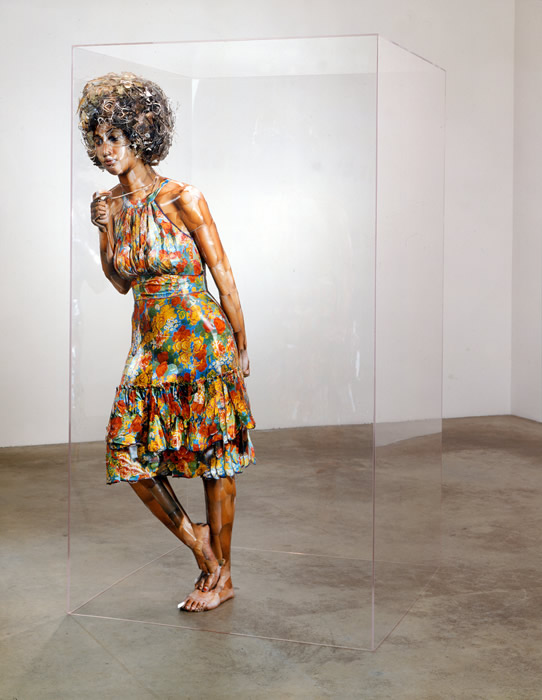
oliver herring
Gloria
Oliver Herring’s stunning sculptural portrait Gloria (2004) was a hit at the recent international art fair Art Basel Miami Beach. Created from thousands of fragmented digital chromogenic prints, this lifelike and expressive construction exists at the intersection of photography and sculpture and between realism and abstraction.

ALEXA MEADE
Алексе Мид
human portrait (paintings with real Humans)
Rather than creating representational paintings on a flat canvas, Alexa Meade creates her representational paintings directly on top of the physical subjects that she is referencing. When photographed, the representational painting and the subject being referenced appear to be one and the same as the 3D space of her painted scenes becomes optically compressed into a 2D plane.

Isabelle Schad
SOLO FÜR LEA
Isabelle Schad re-organizes the dancer’s deconstructed body and plays with analogies and formal aspects of cubism, as well as Picasso’s drawings composed of a single line. The result is a dance portrait, which plays with and reveals the specific features of Moro’s body and its rhythms, contours, colours and energies. more…

marc quinn
We Share Our Chemistry With the Stars (XX200)
The works measure two metres across, with Quinn describing them as ‘stealth portraits’, at once unique and universal and not just an image of the sitter, but an actual visual index of their identity. Using a macro-lens, Quinn captures the sitter’s iris in incredible detail and then uses an airbrush technique to apply oil paint onto canvas, transforming the images into these large-scale works. The eye appears virtually abstract and the pupil appears like a aperture or hole in the centre of a fine, detailed network of colourful lines.more…
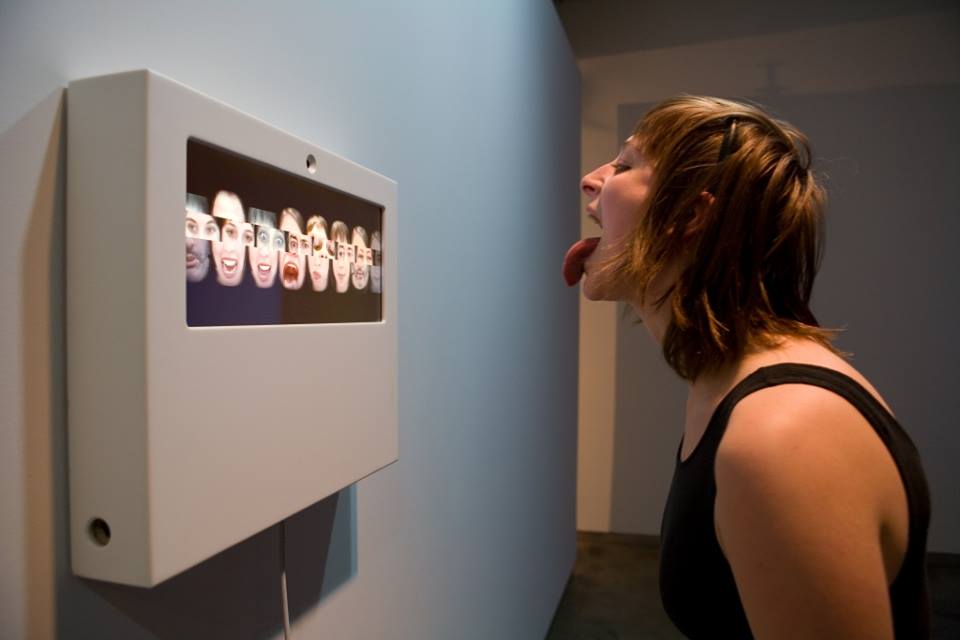
GOLAN LEVIN AND ZACHARY LIEBERMAN
Reface [Portrait Sequencer]
Reface [Portrait Sequencer] by Golan Levin and Zachary Lieberman (2007) is a surreal video mash-up that composes endless combinations of its visitors’ faces. Based on the Victorian “Exquisite Corpse” parlor game, the Reface installation records and dynamically remixes brief video slices of its viewers’ mouths, eyes and brows. Reface uses face-tracking techniques to allow automatic alignment and segmentation of its participants’ faces. As a result, visitors to the project can move around freely in front of the display without worrying about lining up their face for the system’s camera. The video clips recorded by the project are “edited” by the participants’ own eye blinks. Blinking also triggers the display to advance to the next set of face combinations. Through interactions with an image wholly constructed from its own history of being viewed, Reface makes possible a new form of inventive play with one’s own appearance and identity. The resulting kinetic portraiture blends the personalities and genetic traits of its visitors to create a “generative group portrait” of the people in the project’s locale.

Nino Fournier
Portrait de la Jeune Fille en Danseuse
FILE FESTIVAL
FILE VIDEO ART
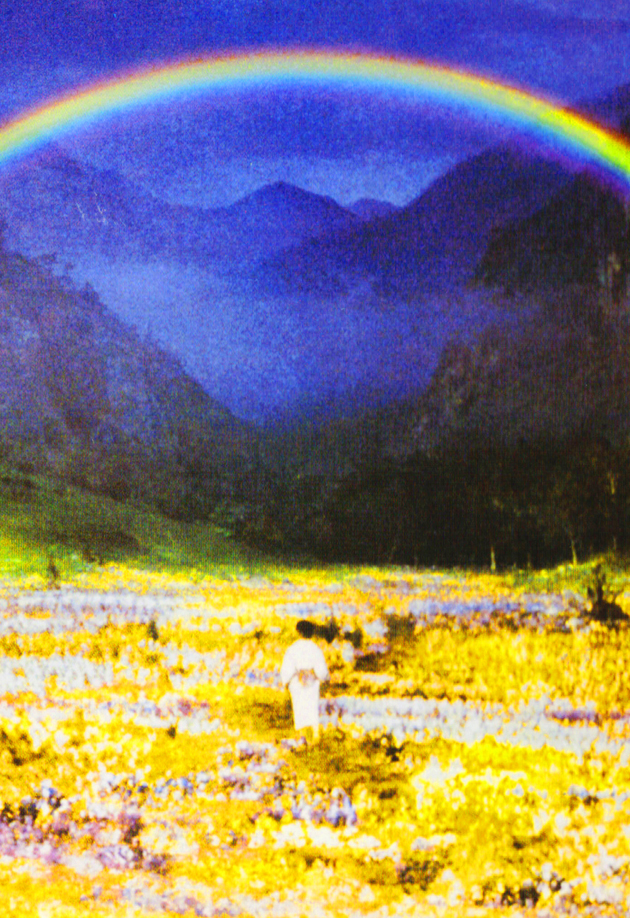
akira kurosawa
An art student finds himself inside the world of Van Gogh’s artwork, where he meets the artist in a field and converses with him. Van Gogh replies that his missing ear gave him problems during a self portrait. The student loses track of the artist, and travels through other works trying to find him, concluding with Van Gogh’s Wheat Field with Crows.

julien berthier
L’Horloge d’une vie de travail
L’horloge d’une vie de travail (2008) est un simple horloge, quoique très précis et de taille imposante, révèle sa nature de dispositif logique lorsqu’on découvre qu’il s’agit du décompte quotidien de toute un vie de travail. La vie et le travail de qui ? Quel est le rapport entre la vie et le travail ? Les heures, les minutes, les secondes sont-elles des unités nécessaires et suffisantes pour résumer l’activité d’un homme ? Cette mesure indifférente, distante, ne serait-elle pas le portrait le plus lucide des conséquences possibles d’un idéal où vie et production se confondent ?

Gillian Wearing
Self-Portrait at Three Years Old
In den letzten zwei Jahrzehnten haben Gillian Wearings Filme, Fotografien und Skulpturen öffentliche Persönlichkeiten und das Privatleben untersucht. Seit Beginn ihrer Karriere hat die Künstlerin Theatertechniken, Reality-Fernsehen und Fly-on-the-Wall-Dokumentarfilme verwendet, um Erzählungen zu konstruieren, die persönliche Fantasien und Geständnisse, individuelle Traumata, Kulturgeschichten und die Rolle der Medien. Die Anonymität durch aufwändige Masken, Kostüme und Rollenspiele ist nach wie vor ein kritischer Bestandteil von Wearings Praxis und einflussreicher Untersuchung der Art und Weise, wie sich Individuen anderen präsentieren, wenn das Selbst vorübergehend verborgen ist.

MAR CANET & CARLES GUTIERREZ
videomaton
File Festival
The initial idea was to engage audiences with the classical paintings. The installation tries to transform the classical portraits into memorable and playful experiences. In short, by looking into a mirror a face of participant is captured by the system. Next, the captured face travels into one of the classical portraits. Hence, the viewer is invited into the gallery in order to recognize him or herself in one of the paintings. In other words, the art piece replaces the original painted faces by the faces of the audience. To be more specific, the authors have created an original face-morphing that integrates itself into the well-know portraits, like Meninas by Goya. To put in a nutshell, the common experience of modern art is replaced by a novel, playful and enjoyable encounter. The installation creates a framework of expression where audience spontaneously and freely interact in front of a mirror knowing that they are recorded. The results are experience by all audience in the gallery. The project was produced in 2011 as a commission of interactive art project for the new City Council of Madrid curated by Chema Conesa. “Videomaton” was presented in the opening of new City Council of Madrid located in the Cibeles square. The installation was exhibited for a year in the institution. The aim of the exhibit was displaying the famous art pieces of Madrid museums in a novel way.

HEATHER DEWEY-HAGBORG
DNA portrait
それらは実在の人々の顔であり、ほとんど粉状の物質からエッチングされた肖像画のような彫刻です。 アーティストのヘザーデューイハグボルグは、彼女の被写体に会ったり見たりしたことがありませんが、目の色ははっきりしていて、顔の輪郭はシャープです。
写真やアートモデルを作品に使用する代わりに、デューイハグボルグ氏はニューヨーク市の通りから砕屑物(たばこの吸い殻、毛包、ガムラッパー)をすくい取り、人々が残した遺伝物質を分析します。 デューイ・ハグボルグ博士 エレクトロニックアーツの学生は、DNAにある手がかりを研究した後、顔を作ります。 「私は気味が悪いとは思いませんが、このプロジェクトが気味が悪いと誰かがどう思うかはわかりました」と、ブルックリンとレンセラー工科大学に通う北部に時間を割く30歳のデューイハグボルグさんは言いました。 工科大学。 「たぶん私はちょっと変だ」

JEREMY BAILEY
ДЖЕРЕМИ БЭЙЛИ
제레미 베일리
ג’רמי ביילי
ジェレミー·ベイリー
Important Portraits
Powered by humor and computer vision, his work wryly critiques the uneasy relationship between technology and the body while playfully engaging the protocols of digital media.

PHILLIPPE HALSMANN AND SALVADOR DALI
In Voluptas Mors
“In Voluptas Mors” (“Voluptuous Death”), is probably one of the most complex portraits I have ever seen alongside Halsman’s “Dali Atomicus” which took 28 attempts! “In Voluptas Mors” is again a carefully considered and planned out portrait of the surrealistic Spanish artist Salvador Dalí, made in collaboration with photographer Philippe Halsman (1951). The image depicts Dalí posing beside a giant ‘skull’, a tableau vivant (or “living picture”) comprising of seven nude female models in beautiful mind blogging poses. As you can imagine it took a considerable amount of time to create this wonderful photograph. It took all in all Halsman and Dali three hours to arrange the models according to Dalí’s precise sketch.

JENNIFER RUBELL
جنيفر روبل
제니퍼 루벨
ジェニファールベル
Portrait of the Artist
Jennifer Rubell, the American artist and niece of Studio 54 co-founder Steve Rubell, brings a maternal touch to this year’s Frieze Art Fair with her autobiographical piece Portrait of the Artist. The pristine white nude, cast from steel-reinforced fibreglass, reclines like an odalisque at the Stephen Friedman Gallery stand. The sculpture is a replica of Rubell’s own eight-months-pregnant body, except it is eight metres high: the large belly, which is carved out to leave an egg-shaped void, can accommodate a fully grown adult. Spectators are able to clamber into the artwork and curl up inside as if they are the artist’s unborn child.Rubell’s intention was to create a monumental gesture of unconditional motherly love. There is a feminist statement here, too: Rubell has appropriated a style and scale historically reserved for male leaders to show, she says, “an emotion that is intensely personal and un-heroic”. The artist adds that watching members of the Frieze audience enter in the sculpture’s womb is “tremendously satisfying” – in her eyes the enlarged form was “incomplete until the first viewer entered”. Amid the hustle of Frieze’s mini-city there is something undeniably appealing about the opportunity to put your feet up in the foetal position in the name of art. Not to mention the comfort factor.